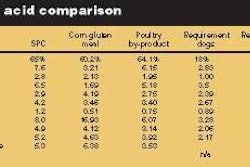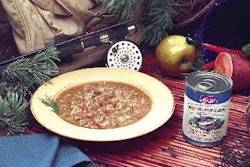
Many of us want to show our pets we love them, or at least like them. We want to strengthen our emotional bond with them. Many of us regard our dogs and cats as family members, almost equivalent to children. One result: We're now more concerned with feeding them the best food we can find. The petfood industry has answered the call. We've gone from basic petfoods to premium to superpremium, and now to ultrapremium petfoods.
Skepticism and anger
Just what are ultrapremium petfoods? The answer depends on who you ask. Ed Mareth of 3D Corporate Solutions shared his views at a recent Petfood Forum, and was greeted with skepticism and some anger. Following are excerpts from his presentation.
Ultrapremium defined
Mareth believes that ultrapremium petfoods are petfoods made with 100% ultrapremium ingredients. He defines ultrapremium ingredients as:
- Ingredients produced with the intent of being consumed by humans.
- Ingredients handled after leaving the human food chain that meet the same "safety and quality" standards found in human-edible ingredients.
- Ingredients that can be traced through a chain of custody that validates handling procedures through the entire supply chain. Mareth noted that, "This is a tough one, because most ingredients go through 14 steps before they reach a finished petfood. That's a lot of liability. A lot of HACCP plans."
One example he used to explain why he thinks ultrapremium products are better is that there is a much lower risk of problems with oxidized fat. Documented problems associated with oxidized fats in animal feed include:
- Bad odor, loss of flavor, pigment, energy;
- Loss of vitamins A, D, E, K;
- Accumulation of oxidized byproducts in cell membranes;
- Reduced body weight; and
- Poor feed conversion.
Another example: The risk of mycotoxin poisoning is greater when grains that are not human-grade quality are used.
Embrace ultrapremium standards?
Why should our industry embrace ultrapremium standards? Because, Mareth contends, there are monumental changes coming to the way the food chain is regulated. In particular, the animal food industry. Look at Europe. In addition, there are, for all practical purposes, no "quality standards for today's ingredients," product definitions yes, quality standards no. He also predicts that it is only a matter of time before the world and the media take an interest in what is entering the grocery store, home and cupboard as a result of loose interpretation of product standards in the petfood industry.
He challenged the audience to ask themselves these questions:
- Would the consumer like all species of animal feed sold at the grocery?
- Would the average consumer expect diseased animals, spoiled meat and contaminated grains to be used to make product on aisle 12 of their local grocery store?
- Would mom like to know the person stocking their baby food on aisle 3 just handled product on aisle 12 containing diseased animals, spoiled meat and contaminated ingredients?
Like it or not
Ultrapremium ingredients today are "human quality." You may not like it, but the only way to guarantee safe, consistent and quality ingredients is to buy "human-quality" raw materials.
So there you have it: Excerpts from a presentation that moved Mareth's audience to ask tough questions and make a few angry statements.
Yes, we've gone from basic petfoods to ultrapremium petfoods. Next, we may see "better than human-grade ingredients" and "people are not good enough for this food" petfoods.















